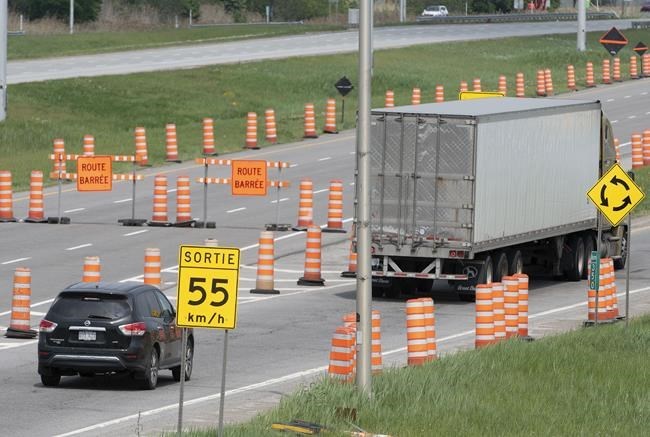MONTREAL — The orange cones that line Montreal's abundant construction sites have become a symbol of a city under near-constant repair, spawning cone-themed comics, a board game and trinket versions sold in gift shops.
Last week, the Montreal administration unveiled its latest attempt to get a handle on the roadwork chaos that has frustrated motorists with endless detours and sometimes resulted in the same streets being torn up multiple times.
The city announced it was creating a "charter of work sites" that promises to ensure better mobility, safety and co-ordination around construction projects, including by removing those orphaned orange cones that often sit dirty, squashed and forgotten along the streets.
It isn't the first attempt to better manage the construction chaos in Montreal — ex-mayor Denis Coderre tried naming a traffic czar in 2017, only to have the candidate leave months later after he was the subject of a harassment complaint. Two experts told The Canadian Press they're not sure how effective the charter will be, but both said it's worth a try.
Jocelyn Pauzé, a city councillor charged with overseeing work site management, says the goal of the charter is to "limit the impacts of work sites in terms of Montrealers' quality of life."
He says it promises to address the need for safer and wider temporary passages for pedestrians, including those with mobility challenges, and to remove cones and no-parking signs when they are no longer needed.
Better communication and environmentally friendly materials are also among the priorities, he said in a recent interview. "We’ve heard Montrealers and we’re listening," he said.
Richard Shearmur, director of McGill University's school of urban planning, says the charter is a step in the right direction but one that is far smaller than what is needed. While it's good the city is setting out a set of guidelines for how construction will be managed, the charter doesn't address the biggest problem, which is one of co-ordination, he said.
It's not uncommon in Montreal, Shearmur added, for several parallel streets to be blocked simultaneously, or to have the same road dug up several times over a short period of time for different kinds of work.
While such problems aren't new, he said they've become increasingly obvious in recent years because of the sheer number of work sites that have popped up as the city grows and tries to make up for an infrastructure-maintenance deficit caused by decades of neglect.
"All these works are being planned in a very piecemeal way, with no thoughts about co-ordination across departments and across different organizations to make sure the city is still usable," he said in a recent interview.
Shearmur said this could be accomplished through a central registry of works that would keep track of the myriad projects run by different entities, including private contractors, public utilities, the province's Transport Department and different city departments.
Avi Friedman, a professor of architecture at McGill, believes the charter simply "states the obvious."
"All the aspects being mentioned, accessibility and security of movement, (they're) obvious when you do a construction site," he said.
The city has improved some aspects of how it manages roadwork, Friedman said, including by sending out workers to keep sites safer and in some instances, with better communication with citizens.
Friedman, however, says he believes the city needs to impose penalties for those who don't respect the charter, as well as ensure essential work is completed swiftly.
Pauzé says the city has taken steps to better co-ordinate work sites and that the charter will further help that goal by better engaging private and public partners of the city, who are responsible for the bulk of the construction work.
He also notes that Montreal has taken other steps to improve traffic fluidity in recent years, including by creating a "mobility squad" to rapidly respond to reports of blocked lanes or other road network problems.
While the city is promising to more quickly remove the orange cones that aren't needed, they're unlikely to disappear altogether.
Pauzé says the cones are required by law in order to secure work sites, and that they are likely to remain a common sight in the years to come as the city catches up on needed work.
This report by The Canadian Press was first published May 22, 2021.
Morgan Lowrie, The Canadian Press

